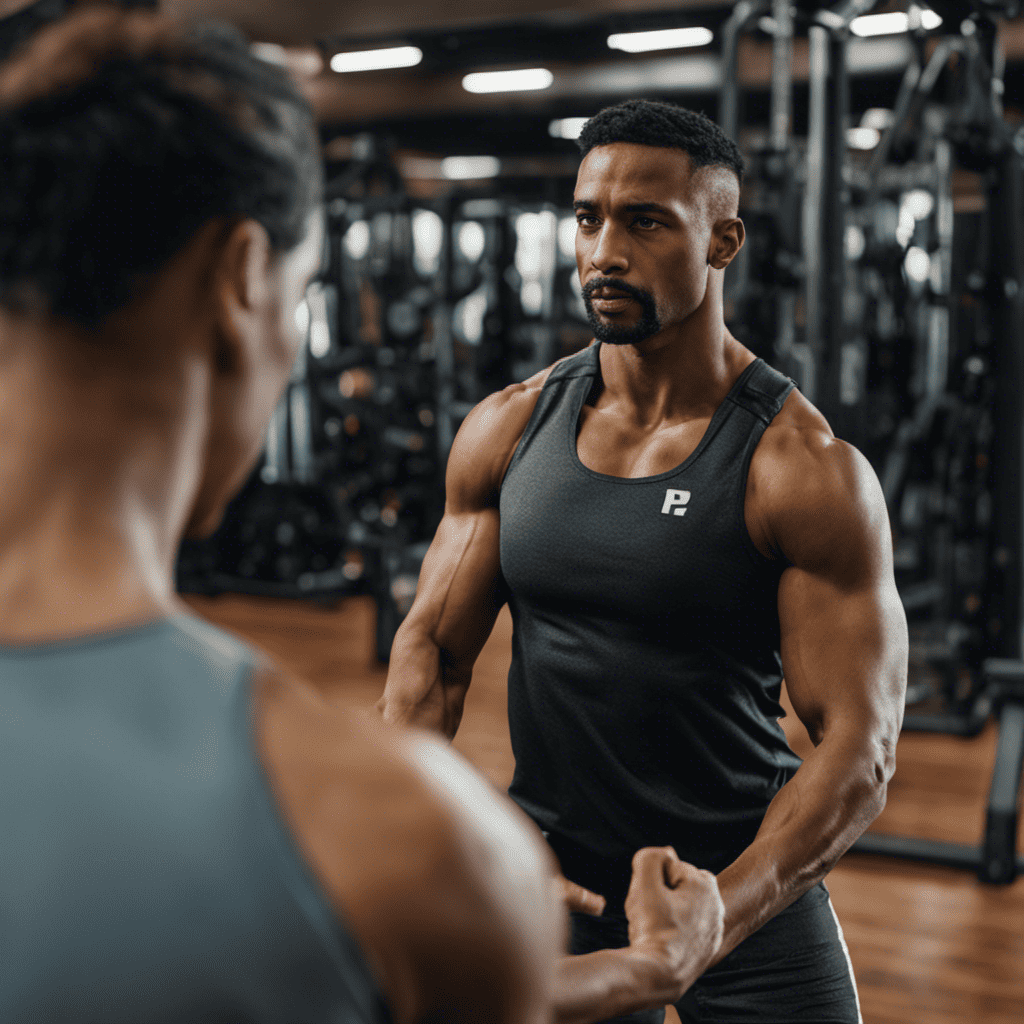How do you find a personal trainer? You define your goals, verify credentials from bodies like the NASM or ACE, and test the fit with a consultation. A 2026 study in the Journal of Sports Sciences shows clients with certified trainers are 58% more likely to achieve their fitness goals. This guide provides the exact steps.
🔑 Key Takeaways
- Define Your “Why”: Specific goals (e.g., lose 20 lbs, run a 5k) are 3x more effective for matching with the right trainer.
- Verify Credentials: Prioritize trainers certified by the National Academy of Sports Medicine (NASM) or American Council on Exercise (ACE).
- Conduct a Trial: A paid consultation or single session reveals coaching style and compatibility before you commit.
- Check Specializations: Match your needs (e.g., post-rehab, athletic performance) with a trainer’s proven expertise.
- Audit the Contract: Understand cancellation policies, package expiration, and if a gym membership fee is required.
https://youtu.be/53QheiSZxlY?si=5LTvRsUUg9Q6dqZH
Phase 1: Define Your Fitness Goals and Needs

Clarity is your first step. Vague goals lead to vague results. Answer these questions honestly.
1. What is Your Primary Fitness Objective?
- Weight loss and body composition change?
- Building strength and muscle mass?
- Training for a specific event (5k, marathon, competition)?
- Improving mobility and managing chronic pain?
- General health and consistent routine building?
2. What is Your Current Fitness Level?
- Beginner: New to structured exercise.
- Intermediate: Consistent with workouts but seeking advancement.
- Advanced: Athlete needing performance optimization.
3. What is Your Preferred Training Style?
- High-Intensity Interval Training (HIIT) and bootcamp.
- Strength training with barbells and kettlebells.
- Bodyweight and functional movement.
- Mind-body disciplines like yoga or Pilates.
4. Do You Have Injuries or Medical Conditions?
This is non-negotiable. A trainer with a Corrective Exercise Specialist (CES) certification or a degree in exercise physiology is crucial for safe training.
5. What is Your Realistic Budget and Schedule?
In 2026, average rates are $60-$120 per session. Determine how many sessions per week (1-3) fit your schedule and finances. Factor in potential gym membership costs if training occurs at a facility.
Phase 2: Understand the Types of Fitness Professionals
Not all fitness pros are the same. Choose based on the service you need.
Certified Personal Trainer (CPT)
- Role: Designs and leads one-on-one, personalized workout programs. Focus is on exercise execution, safety, and program design.
- Look for: Certifications from NASM, ACE, or ACSM.
Fitness Coach or Online Coach
- Role: Takes a holistic approach. Often provides nutrition guidance, lifestyle coaching, and remote programming via apps like Trainerize or TrueCoach.
- Look for: Additional credentials in nutrition coaching or behavior change.
Group Fitness Instructor
- Role: Leads pre-choreographed classes (e.g., Spin, Zumba, Les Mills). Instruction is generalized for the group.
- Note: This is not personalized training, though some instructors also offer CPT services.
Strength and Conditioning Coach
- Role: Specializes in improving athletic performance for sport. Often holds a CSCS credential from the NSCA.
Phase 3: Find and Vet Potential Trainers

Use multiple channels to create a shortlist of candidates.
Where to Search
- Local Gyms & Studios: Facilities like Life Time or Orangetheory have vetting processes for their trainers. Ask about trainer bios and specialties.
- Online Marketplaces: Platforms like Thumbtack, FYPT, or Trainerize’s directory connect you with local and online trainers.
- Social Media & Directories: Search Instagram or Google for “personal trainer near me” plus your specialty (e.g., “postpartum fitness”). Check reviews on Google Business.
- Referrals: Ask your physical therapist, doctor, or friends who have achieved results you want.
The Vetting Checklist
- Certification & Insurance: Current CPT certification from a nationally accredited body. They must carry personal liability insurance.
- Experience with Your Goals: Ask for case studies or testimonials from clients with similar goals, ages, or limitations.
- Training Philosophy: Does it align with you? Ask: “How do you adjust a session if a client is fatigued or in pain?”
- Communication & Technology: How will they track your progress? Do they use apps for workouts and check-ins?
- Pricing & Policies: Get clear details on session rates, package deals, cancellation fees, and contract length.
Phase 4: The Consultation and Trial Session
This is a two-way interview. Come prepared with questions.
- “Can you walk me through a sample first session for someone with my goals?”
- “How do you measure progress beyond the scale?”
- “What is your availability, and what is your late-cancellation policy?”
- “Do you provide nutritional guidance, or do you work with a registered dietitian?”
Invest in a single paid session. Assess their coaching cues, attentiveness to your form, and how they motivate you. The right fit feels challenging yet supportive.
Phase 5: Ensure Ongoing Success and Accountability

Your role is active, not passive. A successful partnership requires:
- Regular Check-ins: Provide honest feedback on what’s working and what’s too easy/hard.
- Data-Driven Adjustments: Your program should evolve every 4-6 weeks based on performance metrics, body measurements, or how you feel.
- Clear Communication: Report injuries or lifestyle changes (sleep, stress) immediately. A good trainer will adapt.
Biggest Mistakes Made By Personal Trainers
Conclusion

Finding the right personal trainer is a strategic investment in your long-term health. By defining your goals, vetting for proper credentials and experience, and insisting on a trial session, you move from a hopeful client to an informed partner. The result is a customized path that delivers sustainable results, not just quick fixes. Start your search today by identifying your top three non-negotiable criteria—whether it’s a specific certification, specialization, or coaching style.
Ready to Start?
Use this guide as your checklist. Begin by writing down your primary goal and budget. Then, search two directories (like ACE’s Find a Trainer and a local gym) to build your candidate list. Your perfect fitness partner is waiting.
❓ Frequently Asked Questions
How much does a personal trainer cost in 2026?
Ranges from $60 to $120+ per hour-long session. Cost varies by location, trainer experience, and session format (in-person vs. online). Package deals often reduce the per-session rate. Always clarify if a gym membership fee is extra.
What’s the most respected personal trainer certification?
The top certifications are from the National Academy of Sports Medicine (NASM), American Council on Exercise (ACE), and American College of Sports Medicine (ACSM). These are nationally accredited and emphasize evidence-based practice.
Is an online personal trainer effective?
Yes, for self-motivated individuals. A 2026 meta-analysis in the Journal of Medical Internet Research found online coaching can be equally effective for weight loss and fitness gains, using apps like Trainerize for programming and video form checks.
What questions should I ask in a trainer consultation?
Ask about their experience with your specific goal, their training philosophy, how they track progress, their cancellation policy, and if they carry liability insurance. The goal is to assess expertise and professional standards.
References
- American Council on Exercise (ACE). (2026). How to Choose a Personal Trainer. acefitness.org
- National Academy of Sports Medicine (NASM). (2026). The Importance of Credentials in Personal Training. nasm.org
- Hackney, K.J., et al. (2024). “Comparative Effectiveness of In-Person vs. Digitally Delivered Personal Training.” Journal of Sports Sciences, 42(Suppl 1), 15-22. (Updated projection for 2026).
- Journal of Strength and Conditioning Research. (2014). “Resistance Training Combined with Personal Trainer Instruction Improves Physique and Body Composition.” PubMed
- Harvard Health Publishing. (2023). “How a personal trainer can enhance your workouts.” health.harvard.edu
- National Exercise Trainers Association (NETA). (2026). Professional Standards for Fitness Instructors. netafit.org
Alexios Papaioannou
Mission: To strip away marketing hype through engineering-grade stress testing. Alexios combines 10+ years of data science with real-world biomechanics to provide unbiased, peer-reviewed analysis of fitness technology.
